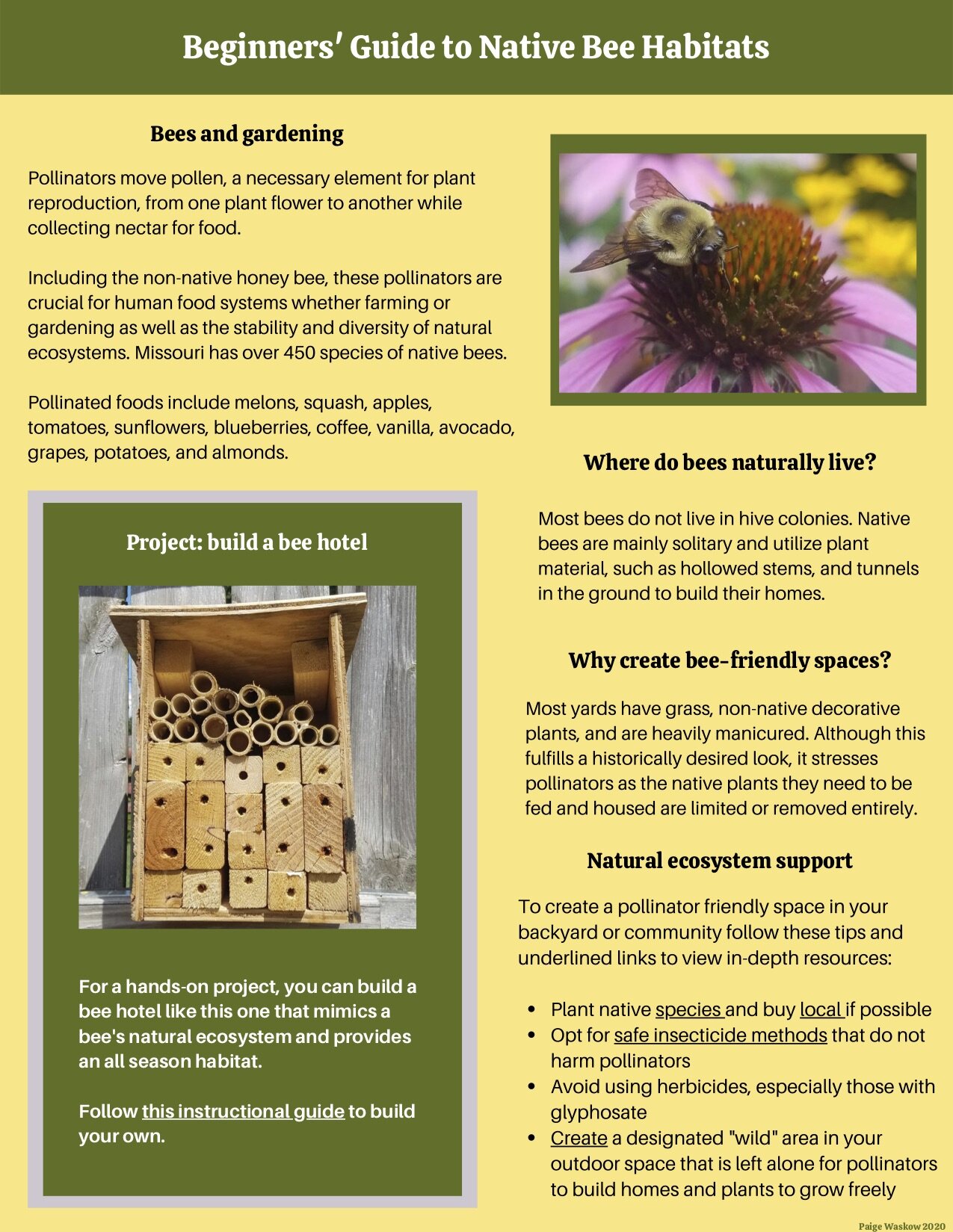Scrap Gardening for Beginners
Scrap gardening is great for beginners who are wanting to experiment with their first garden and for those who just do not have room for a large garden in their yard. It is also a great way to save money on fresh food!
By Savannah Kohler, Leadership in Urban Agriculture Internship, 2020
An estimated 1/3 of all food that was made for consumption, ends up as waste instead. (1) Along with composting, scrap gardening is one of many strategies used world-wide to help with the reduction of food waste. While eating a higher quality diet is related to less cropland waste, it does have a negative association with food waste. (2) By taking the time to turn some of our kitchen scraps into a small scrap garden, we are doing our part in helping to provide a sustainable food system.
Scrap gardening is great for beginners who are wanting to experiment with their first garden and for those who just do not have room for a large garden in their yard. It is also a great way to save money on fresh food!
How is this done?
While each plant may vary in the amount of water used, the length cut of the scraps, and the amount of time it takes to regrow, it is all still remarkably easy and very much achievable! To begin, you will need for your plants to grow roots. See below for instructions.
What plants can I regrow?
You can regrow most of your veggies and fruits, but not all. Here are some examples of popular options that you can regrow and how to do it.
GREEN ONIONS: Cut off the top of the plant and keep the end that grows roots. Plant it in potting soil and place it in a well-lit room. Soon, the green onions will begin to grow back, and you can snip them off the plant and use them as needed.
CELERY: Cut the stalk, leaving about two inches at the bottom. Place the two-inch-long end in a bowl of very shallow water. When leaves begin to grow on top, you can move into potting soil and watch it grow.
ROMAINE LETTUCE: Cut the lettuce, leaving about two inches at the bottom. Place the two-inch-long end in a shallow bowl of water. As leaves grow, you may eat them.
POTATOES: Wait until your potato is starting to sprout. When it does, cut the potato in slices around the sprouts. Plant in deep soil with the eye facing up. Cover the potato entirely with soil.
HERBS: Pick most leaves from the stem, while leaving the only top few remaining. Place the stems in a glass of water. Replace the water every few days. Plant stems in soil once they have grown their roots.
Helpful Links:
https://www.diyncrafts.com/4732/repurpose/25-foods-can-re-grow-kitchen-scraps
References
Anastasia M, Alexandru J, Liliana S(C. Studies on the use of vegetable scraps. https://ibn.idsi.md/ro/vizualizare_articol/72422. Published February 20, 2019. Accessed July 27, 2020.
Conrad Z, Niles MT, Neher DA, Roy ED, Tichenor NE, Jahns L. Relationship between food waste, diet quality, and environmental sustainability. Plos One. 2018;13(4). doi:10.1371/journal.pone.0195405
Skullcap and Mullein for Health and Wellness
Learn how skullcap and mullein can be grown and used for therapeutic benefits!
By Libby Landes, Leadership in Urban Agriculture Internship, Fall II 2020
SKULLCAP
Scutellaria lateriflora
Parts used | Aboveground parts.
Nutrients | Calcium, iron, magnesium, manganese, phosphorus, potassium, selenium, zinc, vitamins B1, B2, B3, and C.
Therapeutic uses | Aids sleep, improves circulation, and strengthens the heart muscle. Relieves muscle cramps, pain, spasms, and stress. Good for anxiety, fatigue, cardiovascular disease, headache, hyperactivity, nervous disorders, and rheumatism. Known to be useful in treating barbiturate addiction and drug withdrawal.
Origins | The American Skullcap is a member of the mint family and native to eastern North America. The name Scutellaria refers to the helmetlike or skullcaplike form of each flower. Lateriflora, meaning “flowering on the side,” reveals that the skullcap’s blooms grow along just one side of its stalk.
Growing habits and cultivation | Skullcap is a perennial, 1 to 3 feet tall, that is found in the wetlands, riverbanks, and marshes in much of North America. It likes a relatively rich, moist but acidic soil and is propagated by seeds or cuttings.
Actions | Compounds in skullcap may bind to a GABA receptor in the brain responsible for modulating anxiety. Skullcap also contains the amino acid glutamine, which provides both sedative and anxiety-fighting effects.
How to use | Skullcap may be ingested orally through capsule, alcohol tinctures, or teas. Some herbal experts may recommend tinctures of the fresh plant to capture more of the healing compounds lost in drying the plant. When smoked, skullcap enters the bloodstream more quickly than other forms of consumption for quick anxiety relief.
Precautions | Drowsiness may result from this sedative herb.
MULLEIN
Verbascum thapsus
Part used | Leaves & flowers.
Nutrients | Calcium, iron, magnesium, phosphorus, potassium, selenium, zinc, vitamins B1, B2, B3, and C.
Therapeutic uses | Acts as a laxative, painkiller, and sleep aid. Clears congestion, soothes inflammation. Taken internally, aids in getting rid of warts. Useful for asthma, bronchitis, difficulty breathing, earache, hay fever, and swollen glands. In past years, research has shown that mullein kills disease-causing bacteria.
Origins | The name mullein may come from the Latin word mollis, which means “soft”, a reference to the plant’s velvety texture. European settlers introduced mullein into North America. In the late 1800s, doctors prescribed mullein for the cough and congestion associated with tuberculosis and other respiratory infections such as laryngitis, whooping cough, influenza, and asthma.
Growing habits and cultivation | Mullein is now found throughout the U.S. and Canada, in dry gravelly or sandy soils along roads and dry fields. Easily grown from seed on the edge of a garden among the other weeds, especially in sandy or rocky soil.
Actions | Mullein is known for its tissue-coating properties as well as anti-inflammatory, antiviral, and antibacterial effects.
How to use | Mullein tea has been used for respiratory problems and touted for its ability to soothe irritated membranes, relieve congestion, and break up phlegm. Infusions of the flower may be dabbed on the skin to heal sores, burns, and infections. It may also be made into a tincture or infused in oil. Mullein has been known to be a base herb in smoking preparations as well.
Precautions | Aside from the seeds, mullein is thought to be safe and well-tolerated.
WORKS CITED
Johnson, R., Foster, S. and Weil, A., 2014. National Geographic Guide To Medicinal Herbs. Washington, D.C.: National Geographic.
Indigenous Agricultural Practices
Learn about Indigenous agricultural practices and some facts about traditional native food.
By Shea Metzler Leadership in Urban Agriculture Internship, Fall I 2020
Click on the image for a PDF version of the guide.
Friend or Foe: What You Didn't Know About Weeds
Weeding is one of the most essential tasks in gardening, and the job is never done. These backyard “volunteers” always seem to find a way to thrive. Knowing your weeds can help you out. Some weeds are tricky to combat and can really hurt your plants, but others can be quite useful. Knowing these things can help lessen your load and maybe even bring a little something extra to your garden. This video will focus on a few different weeds and how they might affect your garden.
By Louise Haupert, Leadership in Urban Agriculture Internship, Fall I 2020
For the video transcript, click here.
Environmental Justice Initiatives in St. Louis
Find out more about environmental justice and food justice work happening in St. Louis!
Beginner's Guide to Permaculture and Home Gardening
Collectively realizing ecological and food justice can and will start small, especially through the bioregional practice of integrating permaculture principles into home gardening.
By Liz Burkemper, Leadership in Urban Agriculture Internship, Summer II 2020
Collectively realizing ecological and food justice can and will start small, especially through the bioregional practice of integrating permaculture principles into home gardening.
To live bioregionally means to live in place: we are cognizant and contemplative of the ecological needs of our places, whether terrestrially or communally. We nourish Earth instead of stripping it down, we grow and eat in awareness of the natural ecosystems and natively thriving plants, we grow with the Earth instead of against it, we abide with our community rather than separately from it.
Our home gardens are perfect grounds for beginning to do so toward listening to the Earth and nourishing our (and our community’s) body. Through the practice of permaculture, we might thoroughly enjoy the Earth’s fruits—grown in harmony rather than in opposition—and what we don’t enjoy, we give away to our neighbors and back to the soil.
Some tips on bringing permaculture to your backyard/home garden:
1. Grow your soil! Instead of tilling, feed your garden beds—layer with cardboard or leaves/grass clippings from your yard. Through permaculture, we learn that every part of the life cycle is useful, and that soil is living, so we must nourish it instead of snuffing out its natural vitality.
2. Grow perennials! Unlike annual-only plants, perennials—especially when planted polyculturally so as to balance the garden ecosystem—won’t zap the soil nutrients + don’t need to start from seed over and over again. Think kale, garlic, rhubarb, chives, asparagus, artichokes!
a. Don’t forget: “perennial” does not mean “no tending required”!
b. Since perennials grow differently than many crops favored by modern industrial agriculture, many of these plants have been lost to history or are rarely found in the grocery store. Don’t be afraid to try veggies you have never tasted before!
3. Mulch mulch mulch! Mulch is the ultimate soil protector—from dryness + erosion, of essential microorganisms and insects, of soil moisture. Here’s an easy guide to permaculture mulching in your garden.
a. Use organic materials from your own lawn: grass clippings, leaves, pine needles, fallen branches, twigs, bark, (sometimes) rocks...
b. ...or find local byproducts (which are often free): grain husks, sawdust, woodchips c. Make a layer that’s three inches thick, and do it again!
4. Build a creative (i.e. no-row) space! Gardening and farming through plowed rows resists the natural thriving of plants, even visually—planted rows mean empty rows between them. Instead, mix your tall + short plants, let vines grow upwards on corn stalks, and plant with curves so as to use your garden space wisely and ensure healthy microclimates for your plants.
a. Unconvinced of the rad benefits of row-less gardening? Check out this deep dive into the advantages for small-scale gardeners!
b. Used on the Urban Harvest STL farms, raised rows are another low-maintenance, no-till means of building up your garden.
5. Don’t waste! Permaculture thrives on a closed-loop system: all waste (output) is reintegrated as resources (input) so as to ensure the dynamism and energy efficiency of the growing system. This means harvesting seeds, using weeds to rebuild the soil, composting, and more.
These are just some beginner’s tips! At the heart of permaculture and bioregionalism is listening and paying attention to the land on which we live, instead of forcing our own thoughts and desires onto the land or into our communities. This listening can be practiced anywhere and everywhere.
For more diving and digging, check out Deep Green Permaculture’s guide to starting your own permaculture garden + Permaculture News’ guide to doing so small-space intensively.
Beginner's Guide to Native Bee Habitats
Learn about the benefits of planting native flowers and some common examples!
A Brief Guide to Native Planting in Missouri
Learn about the benefits of planting native flowers and some common examples!
Why Rye? The Benefits of this Cover Crop
Learn from director of urban agriculture Drew about why we use winter rye as a cover crop in our raised beds! Filmed on location at Fresh Starts Community Garden.
Get Started: DIY Organic Fertilizers
The most important factor for healthy plant growth is healthy soil. As mentioned in Part 1, the key to building healthy soil is the regular addition of soil amendments like compost. If you are looking to replenish specific nutrients or to grow heavy feeders like tomatoes, you can make your own organic plant food at home. You need only apply small quantities when plants need it, rather than large amounts over the whole garden. Remember: LESS IS MORE when it comes to fertilizer. Read on for some low-cost or no-cost options for making your own gentle organic fertilizers at home.
The most important factor for healthy plant growth is healthy soil. As mentioned in Part 1, the key to building healthy soil is the regular addition of soil amendments like compost. If you are looking to replenish specific nutrients or to grow heavy feeders like tomatoes, you can make your own organic plant food at home. You need only apply small quantities when plants need it, rather than large amounts over the whole garden. Remember: LESS IS MORE when it comes to fertilizer.
Here are some low-cost or no-cost options for making your own gentle organic fertilizers at home.
Comfrey Liquid Fertilizer
Harvest a large bag of comfrey leaves. Be sure to wear gloves, as leaves can cause irritation.
Fill a large bucket or container with crushed leaves and weigh them down. Cover with a lid to contain the smell.
Leave for 2 weeks. The leaves will produce a dark concentrated liquid – drain this into a separate container and toss used leaves in the compost pile.
Mix 1 part comfrey concentrate with 15 parts rainwater (1:15) in a watering can and apply it to the soil at the base of your plants.
Nettle Tea
Stinging nettles are common plants (even considered weeds!) that can be steeped to create a liquid nitrogen fertilizer.
Using gloves (plants will sting), cut leaves and stems at the base (do not include the roots) and fold, chop, or crush them into a bucket.
Fill the bucket with rainwater and cover and place in a warm sunny spot.
Check every 2 days to stir the tea. Foam on the top is normal.
The tea will take 2 weeks in a warm location, and up to 3 in a cool or shady spot. You can strain the tea into a new container through a cheesecloth or scoop the plant parts out of the liquid and add to the compost pile.
To use, mix 1 part nettle tea with 10 parts water (1:10) poured at the base of plants
(Note: You will still need to use compost to get the most out of this fertilizer. It is not meant for beans, peas, onions, potatoes and root vegetables).
Quick Fix Fertilizer Recipe:
In a 1 gallon container, add
1 tsp baking powder
1 tsp ammonia (quick nitrogen),
3 tsp instant iced tea (tannic acid),
3 tsp blackstrap molasses (feeds soil bacteria)
3 tbsp of 3% hydrogen peroxide (oxidizer)
1/4 C crushed bone scraps (phosphorus—fish bones provide potassium)
1 crushed eggshell (calcium & potassium)
1/2 dried banana peel (potassium)
Fill the jug the rest of the way with water (rainwater is best)
Replace cap and allow the jug to sit in the sun for about 1 hour to warm.
Water your plants with this mixture at full strength.
Kitchen Waste
These are some common outputs from a kitchen that many home gardeners have adapted to feed their plants. There are many “myths” about these materials, however, they may be used as below:
Spent Coffee Grounds: Often applied to acidic-soil loving plants like berries or azaleas. Grounds are high in nitrogen, but there is debate among growers if they are beneficial when directly applied to vegetable beds. Due to their residual caffeine and high nitrogen content, they are probably most effective for adding to a compost pile with a lot of woody/brown materials to create a balanced compost.
Eggshell: High in calcium, egg shells can balance oil acidity and assist with nutrient uptake. Egg shells decompose very slowly, however; therefore, they should be pulverized with a mixer, grinder, or mortar and pestle before you add them to soil or compost. You can steep dried eggshells in water for a few days and use them on both indoor and outdoor plants for a calcium boost.
FOOD FOR THOUGHT
Can you skip fertilizer altogether? This home gardener explains why he never uses fertilizer and gets results without it.
REFERENCES
Vegetable Garden Fertilizer 101
Feeding Your Plants for Free - How to Make Fertilizer for Your Vegetable Garden









